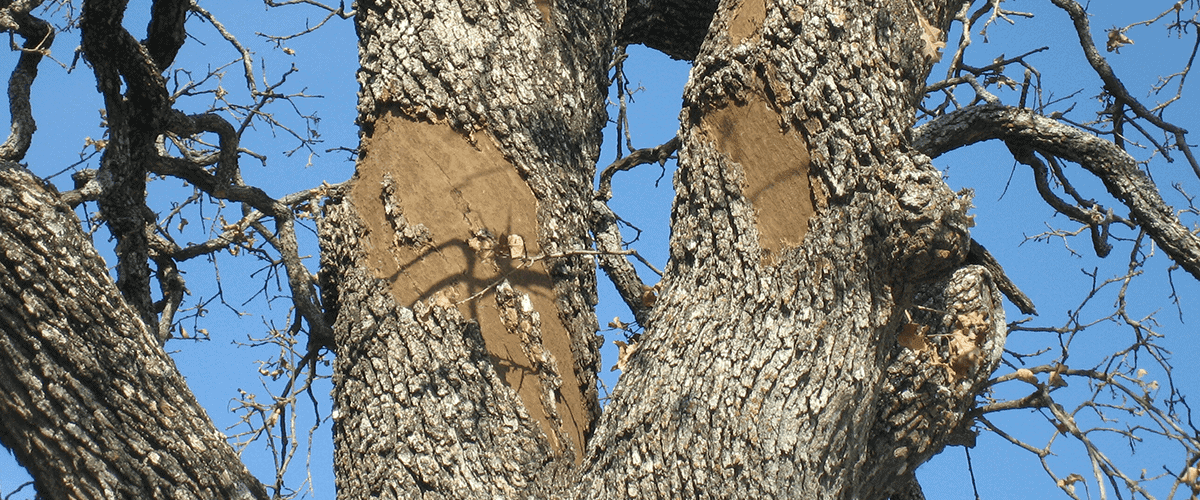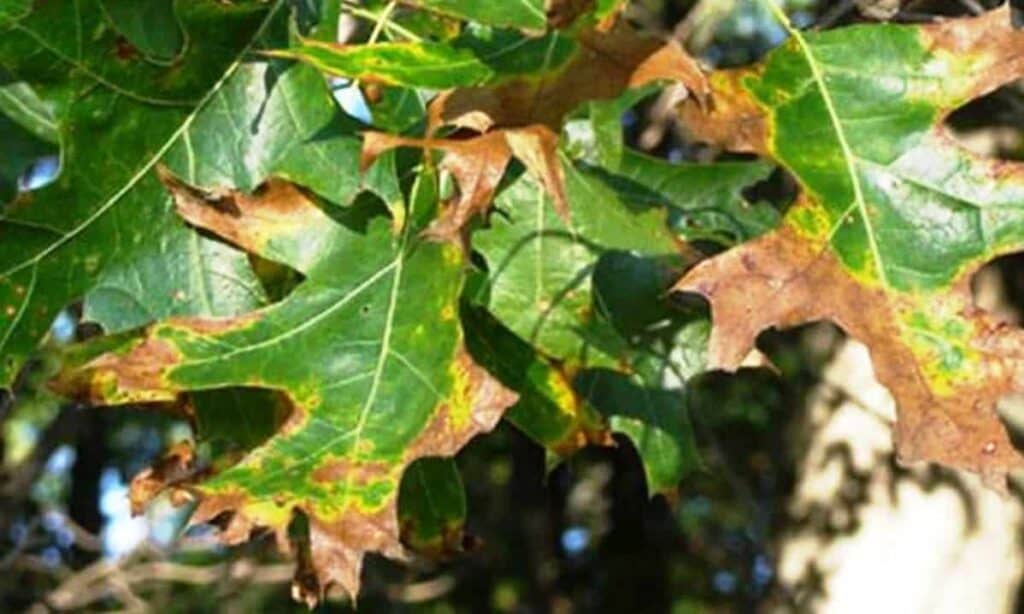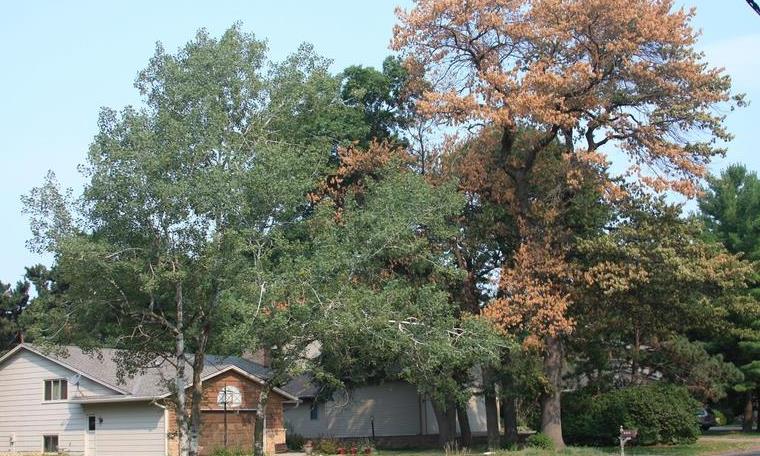
Viva Trees
Get a FREE professional tree service estimate from Viva Trees - one of the most trusted tree companies in the U.S.
OR CALL
Get a Free Estimate
Every project starts with a free tree service estimate. Enter your details to get started.

Get a FREE professional tree service estimate from Viva Trees - one of the most trusted tree companies in the U.S.
OR CALL
Every project starts with a free tree service estimate. Enter your details to get started.

Oak wilt is a severe disease affecting thousands of oak trees in the United States, and it poses a severe threat to the health of trees. Oak wilt can cause extensive damage and even death to these majestic trees if left untreated.
Because of this, homeowners, tree service companies, and landscapers need to know what this disease is and how dangerous it is.
In this Viva Tips article, we’ll discuss everything you need to know about oak wilt and its severe threat to oak trees. We’ll discuss the causes and symptoms of this dangerous disease and the best ways to prevent and treat it.
By understanding how to identify oak wilt fungus, you can take immediate action to protect your trees and keep them healthy for years to come. You can protect your oaks with the proper knowledge and resources known as “plant health care.”
Oak Wilt is a severe fungal disease that significantly threatens oak trees in the United States. It is caused by a fungus called Ceratocystis fagacearum. Sap-feeding beetles spread the fungus where they live.
This fungus can kill an oak tree in as little as six weeks and affect trees of all ages, including newly-planted saplings.
The disease is most commonly found in the Midwest, but it can also be found in other areas. Once a tree is infected, it is impossible to save and must be removed.
As a result, it is vital to be aware of the signs so that the disease can be caught early and the affected tree can be removed to stop the disease’s spread.

As mentioned above, Oak Wilt is a fungal disease that attacks oak trees and is caused by the fungus Ceratocystis fagacearum. It is highly contagious and can spread quickly between trees of different species.
The disease is dangerous to red oaks and is a significant issue for oak trees in forests and cities.
Signs and symptoms include:
These fan-shaped conks range from a few inches to several feet in diameter. In addition, this disease will cause branches to die back and can even kill entire trees.

Oak Wilt infection is spread through root systems, also known as the root graft, and by sap beetles. When an oak species is infected, the fungus will spread to adjacent trees through the interconnected root systems.
If one area is infected, all trees in the same root system may become infected.
The fungus can also be spread by the bark beetle, which carries the fungus from tree to tree. It is important to remember that the beetles can spread the fungus even if the trees are not directly connected through a root system.
Prevention and control methods are vital in protecting your oak trees. The best way to prevent the spread of the disease is to keep your trees healthy and properly pruned.
Avoid pruning or wounding oak trees during the growing season. The fungus can enter through fresh wounds, making it more susceptible to infection.
If your trees require maintenance such as pruning or trimming, it is best to do so during the dormant season, when it is not actively growing and are less susceptible to infection.
Make sure to paint every single cut made immediately to prevent the disease from infecting your healthy trees.
It is important to sterilize your pruning tools or hire a professional tree company that does.
This can be done by dipping the pruning tools in water and household bleach or using a dedicated pruning tool sterilizer.
If you spot an infected tree, remove it as quickly as possible before the disease can spread.
In addition to removing the infected ones, applying fungicides to healthy trees can help to protect them from infection.
Fungicides are chemicals that can kill or inhibit the growth of fungi, including the fungus that causes the disease.
While fungicides are not a guarantee against infection, they can provide an extra layer of protection.
Another way to help prevent it is to plant trees at a sufficient distance from each other to avoid the formation of root grafts.
Root grafts are natural connections that form when roots are planted too close to each other. This makes it easy for the fungus to spread.
Finally, properly dispose of dead trees and infected material, such as pruning debris and fallen branches, to ensure the disease doesn’t spread.
It is essential to hire a professional tree removal service that knows how to remove diseased trees from your property carefully.
These simple steps can help protect your oak trees from this disease and its severe threat.
Treatment options for Oak wilt can vary depending on the severity of the infection. Generally, the aim is to prevent the further spread of the disease.
In extreme cases, diseased trees may need to be cut down and destroyed to stop the spread of the disease.
Other professional tree treatments include:
Fungicides may sometimes be injected into the root systems of healthy trees to keep them from getting sick.
Other ways to stop it include digging 4-foot-deep trenches between trees with symptoms to break up root connections and giving injections of propiconazole. Please contact your local arborist or professional tree company for assistance.
Again, ensuring that any infected wood is removed and disposed of properly is crucial, as it may contain fungus spores.
In conclusion, oak wilt is a devastating fungal disease that can quickly kill oak trees and can spread to nearby trees.
Knowing the signs and acting quickly to protect trees from this disease is essential. There are different ways to protect oak trees, and talking to a professional before doing anything is important.
We can protect our precious oak trees from this deadly disease by working together.
If you liked this blog, check out our other tree care and maintenance articles on: